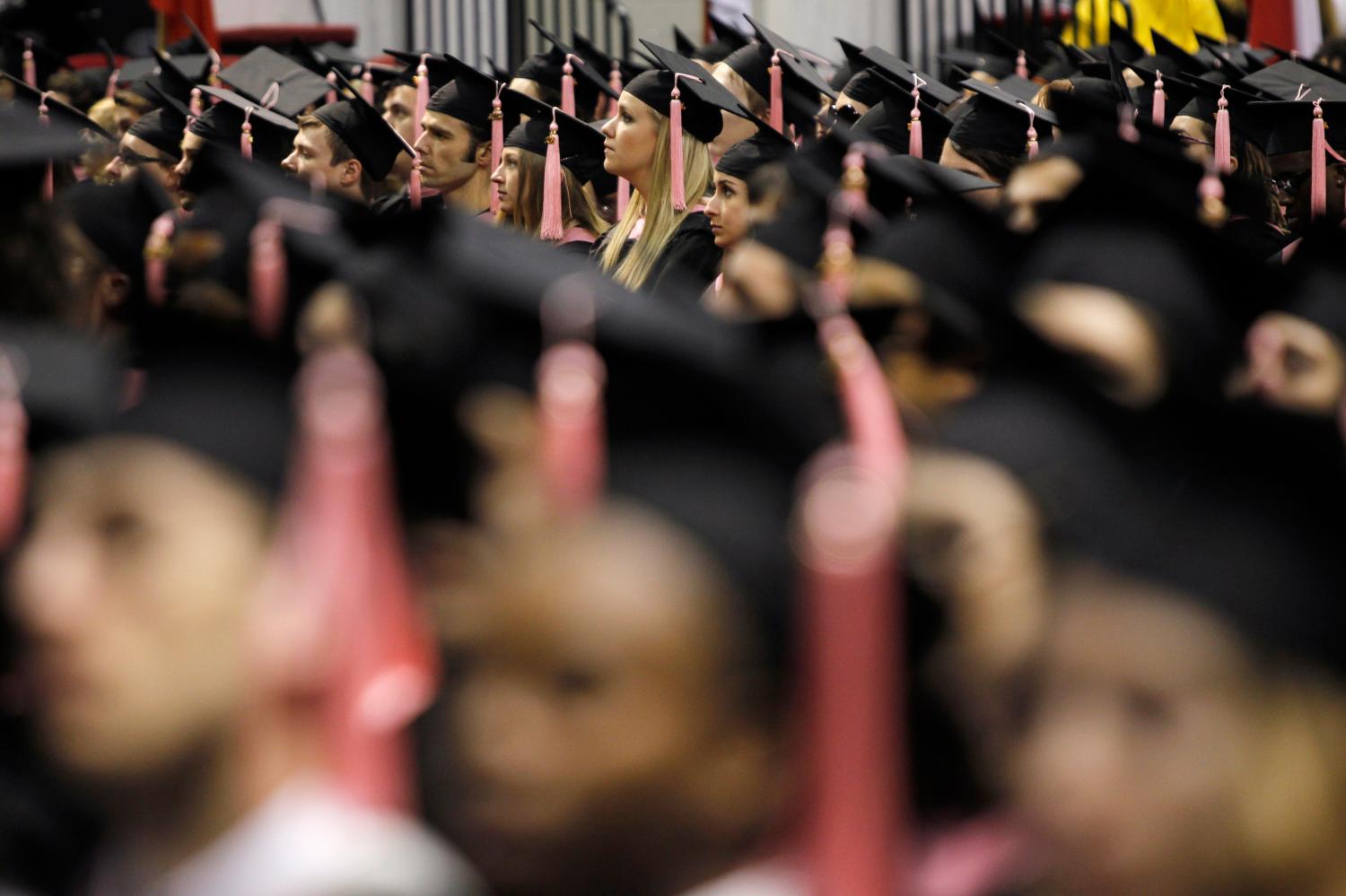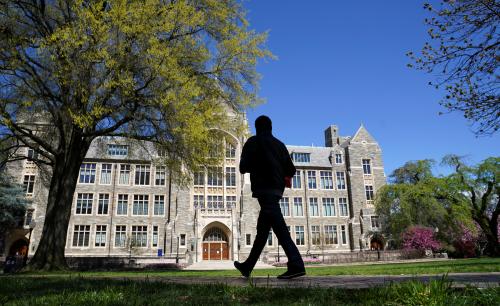This paper was written in conjunction with the Accountability in Higher Education event on September 8, 2020.
In the United States, college students and their families borrow nearly $100 billion annually from the federal government (Baum et al., 2018). A growing portion of this federal debt is borrowed by students’ parents and by graduate students through the PLUS Loan Program. A key distinction of the PLUS program relative to most other federal student loan programs is that borrowers must pass a special credit check in order to be eligible for PLUS loan credit. The credit check is based on an individual’s “adverse credit history,” or negative events such as bankruptcy, collections, or delinquency on existing loans. Over the past ten years, the standards used to determine whether a prospective borrower has an adverse credit history for PLUS loans have substantively changed twice. In 2011, an administrative correction to an error in the application of the standards resulted in stricter standards for many families. In 2014, these stricter standards were partially relaxed. In this report, we examine the potential implications of these changes and adverse credit standards more generally, highlighting the tradeoffs between the stringency of the standards and access to credit, particularly among students from underrepresented sociodemographic groups.
The federal government is currently the largest provider of student loan credit in the United States, accounting for about 90 percent of the approximately $110 billion disbursed each year (Baum et al., 2018). Most federal student loan programs offer relatively attractive terms and conditions. For example, there are effectively no underwriting criteria under the largest federal student loan program, Stafford Loans, as long as an applying student attends an eligible institution. In other words, a student’s loan approval does not depend on borrower characteristics or individual expected default risk. It is also typical that interest rates in federal student loan programs are subsidized and do not vary with a student’s risk of default. Some federal loan programs also offer benefits such as the ability to postpone or reduce payments and/or interest accrual during times of college enrollment or hardship, or access to flexible payment plans such as income-based repayment.
Graduate and professional students can borrow federal student loan moneys through only some federal loan programs, including unsubsidized Stafford loans and the Direct PLUS loan program (commonly referred to as “Grad PLUS”). Funds through the PLUS loan program are also accessible to parents of undergraduate students (commonly referred to as “Parent PLUS” – the “PLUS” acronym originally stood for “Parent Loans for Undergraduate Students”). The program was created as part of the 1980 reauthorization of the Higher Education Act (HEA), with the goal of providing liquidity to parents who might not be able to meet their “Expected Family Contribution” (EFC) under federal student aid programs (Baum, Blagg, & Fishman, 2019). Up until 2010, PLUS loans could be originated under two different programs: the Direct Loan program, where loans were issued by the Department of Education (as all loans are today), and the Federal Family Education Loan (FFEL) program, where loans were issued by banks but backed by the government. The terms, conditions, and credit standards for PLUS loans were supposed to be the same under both programs and for the most part, they were. However, as we describe in detail in the next section, the credit standards under these two programs diverged for a period of time, while all other terms remained the same (Fishman 2018).
Parent PLUS loans allow biological, adoptive, and in some cases, stepparents, to borrow PLUS loans for a dependent undergraduate student enrolled at least half time at an eligible school.[1] When the program began, PLUS loans had a cap of $3,000 and no credit check, but the 1992 HEA reauthorization generated important changes to the PLUS program that remain in place today. Most importantly, the $3,000 borrowing cap was lifted and adverse credit standards were instituted.
Unlike Direct Loans for undergraduate students, today, PLUS loans have no universal annual or cumulative maximum; instead, parents and graduate students can borrow up to the cost of attendance, less other financial assistance. Since tuition, fees, books, transportation, room and board, and other living expenses count toward the cost of attendance, PLUS loan borrowers face caps on borrowing that have been criticized as too expansive (e.g., Kreighbaum, 2019). Interest rates are fixed over the life of the loan, but PLUS loans generally have higher interest rates than other federal student loan programs and they also come with an origination fee. For example, for the 2019-2020 academic year, PLUS loans had an interest rate of 7.08%, as compared with 4.53% for Direct subsidized and unsubsidized loans for undergraduate students and 6.08% for Direct loans for graduate or professional students.
In Figure 1, we display federal student loan dollars disbursed from 2000-01 to 2017-18, by loan program and by whether the money was disbursed for undergraduate (UG) or graduate (GR) student expenses. Nearly $24 billion in PLUS loan funds were disbursed in the most recent year, an increase of over 70% from a decade earlier, comprised of about $13 billion disbursed to parents and almost $11 billion to graduate students. PLUS loans share of all federal loan disbursements have also grown over time, growing from about 14 percent of disbursements in the 2008-2009 academic year to about 25 percent in the 2017-2018 academic year. Average annual loan amounts per borrower in the Parent ($16,408) and Grad PLUS ($24,782) programs are relatively higher than other federal loan programs, such as the Stafford program which has annual and cumulative loan limits ($8,767 total including subsidized and unsubsidized loans) (Baum et al., 2019). In total in 2017-18, about 416,000 graduate students took out Grad PLUS loans and 779,000 parents of undergraduates borrowed under Parent PLUS (Baum et al., 2018, p.17).

PLUS loan take up varies by sector, with higher take up in private institutions—particularly for-profits—relative to publics. As of 2015-16 (the latest year for which data are available), the parents of about 15% of dependent degree and certificate recipients had borrowed PLUS loans. Among private college graduates, the analogous figure is 32% for for-profit students and 23% for nonprofit students. Take up in public institutions is much lower, with just 3% public two-year students graduating with parent PLUS loans and 17% among students leaving four-year publics (Baum et al., 2019, p.24). Interest rates and amounts are also much higher among bachelor’s degree recipients than for dropouts and sub-baccalaureate students. Among dependent students who eventually received a bachelor’s degree, 20% of parents had borrowed a PLUS loan at some point during the student’s undergraduate years, with average amounts borrowed among this group of $36,800 (Baum et al., 2018, p. 18).
In this study, we first describe the changes in credit standards implemented in 2011 and 2014 and their implications for borrowing and access to credit, focusing on high poverty and high share non-white Census tracts. We then use a nationally representative sample of anonymized credit bureau records to explore the implications of adverse credit standards in the PLUS loan program. We cannot identify PLUS loans in the data with precision, so we use age as a proxy for loans taken out by parents of undergraduate students. We ask how various standards applied individually and in conjunction with each other would affect the proportion of individuals who appear to fail that standard based on the presence of negative events in their credit files. We end with analyses that consider how a number of simple, hypothetical stringency standards and borrowing limits might affect access to federal student and parent credit. We caution that are not recommending these alternatives but merely illustrating their challenges and consequences.
Our findings reveal a tension between stricter standards and potential access to credit in the PLUS loan program. As credit standards were tightened in 2011, fewer consumers living in areas with high poverty, high shares of non-white residents, and high shares of Black residents were likely to have access to that credit, potentially exacerbating inequities in access to higher education. Our analysis of hypothetical policy proposals suggests that capping PLUS loan amounts might provide a more equitable approach to balancing risk and access than relying on adverse credit standards. Such caps may help some students and their families avoid burdensome debt balances but may still push some borrowers toward more expensive forms of credit or students to pursue less education.
Read the full report here.
The authors did not receive financial support from any firm or person for this article or from any firm or person with a financial or political interest in this article. They are currently not an officer, director, or board member of any organization with an interest in this article. The Federal Reserve Bank of Philadelphia has a right to review the work of its employees to meet publishing and ethics standards. Equifax, as a data vendor, has the right to review work that uses the Federal Reserve Bank of New York/Equifax Consumer Credit Panel data to ensure that the data is represented accurately and used appropriately.









